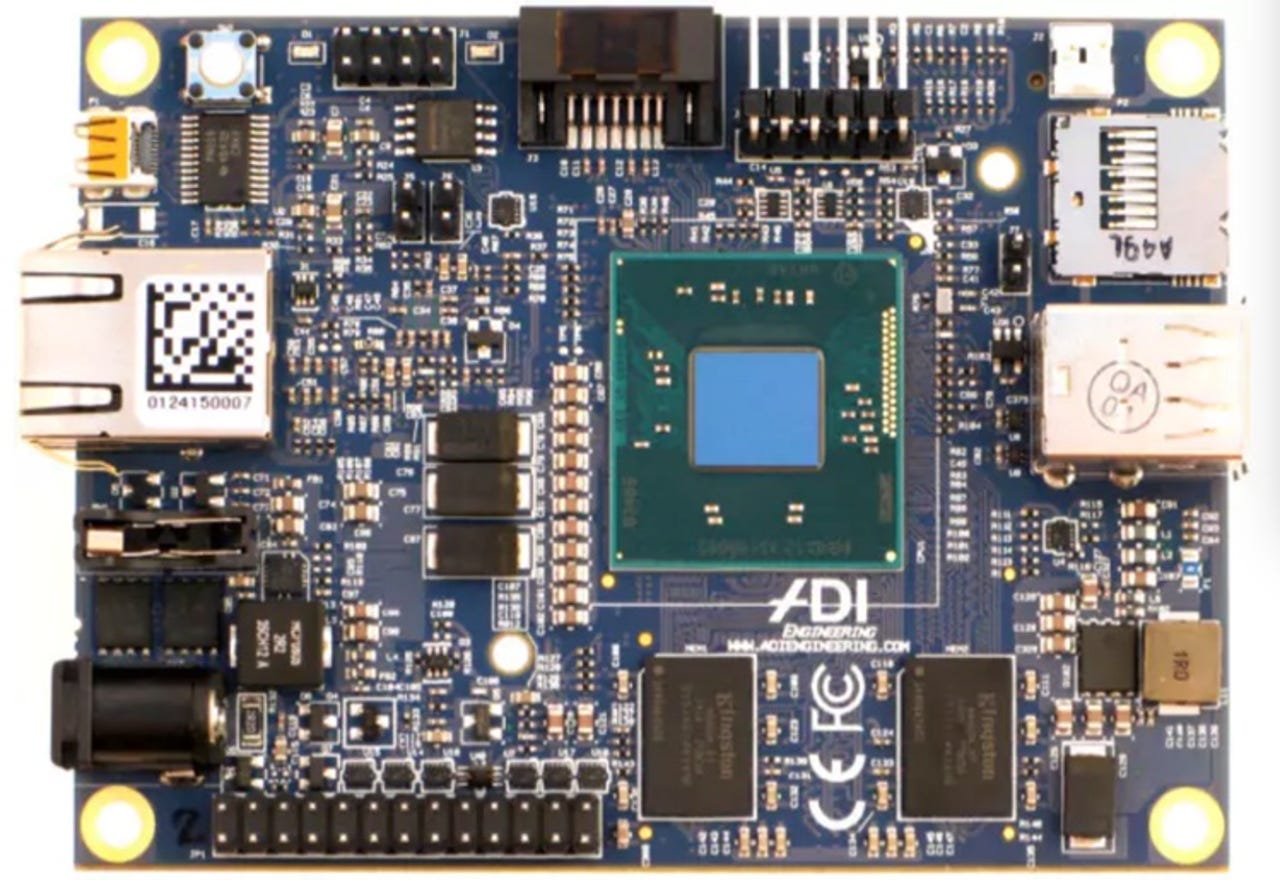Top 12 Raspberry Pi alternatives


MinnowBoard Turbot Dual Ethernet Quad-Core
The MinnowBoard Turbot Dual Ethernet Quad-Core is a powerful quad-core board featuring 2GB of RAM and 8MB of SPI flash storage. It also features twin Ethernet ports for flexible wired connectivity.
At $199 it's not a cheap board, but it does offer a number of high-end features.
BBC micro:bit
While the BBC micro:bit is primarily aimed at schools, its low price (about $16) and ease of use makes it a great tool for learning and prototyping on.
The micro:bit is powered by a 32-bit ARM Cortex processor and comes with a built-in accelerometer, magnetometer, and Bluetooth.
A unique feature of the micro:bit is the integrated 5x5 LED matrix that offers 25 individually programmable red LEDs to use as a basic display or output.
NanoPi NEO Plus2
The NanoPi NEO Plus2 is less than half the size of the Raspberry Pi, but it packs a performance and storage punch
- H5 quad-core A53 ARM Cortex processor
- 1GB RAM
- 8GB eMMC storage
- 2 x USB ports
- Gigabit ethernet
All that for $29.
Cubieboard4 CC-A80 High-performance Mini PC Development Board
Not only does the Cubieboard4 pack a punch, it can output 4K video, making it a great choice for those wanting to build a media center or a gaming platform.
At $160, this board doesn't come cheap, but it's a solid basis on which to build a project on.
- Octa-core big.LITTLE Cortex-A15/7 processor
- 64-core IMG PowerVR G6230 GPU
- 2 GB RAM
- 64 GB storage
- 2x USB Host, USB 3.0/2.0 Dual-Role (host/device)
- Ethernet MAC
- 4x SPI, 7x TWI, 7x UART
- 4x SD/MMC
Raspberry Pi Zero W
OK, OK, I know that technically the Zero W is a member of the Raspberry Pi family, but this one is too awesome to not list!
Why?
Because for only $10 it offers a very impressive feature set:
- 1GHz, single-core CPU
- 512MB RAM
- Mini-HDMI port
- Micro-USB On-The-Go port
- Micro-USB power
- HAT-compatible 40-pin header
- Composite video and reset headers
- CSI camera connector
- 802.11n wireless LAN
- Bluetooth 4
C.H.I.P.
At $9, C.H.I.P. is a perfect demonstration of how cheap computing has become. You get what would only a few years ago have been desktop power on a tiny board.
- 1.0GHz CPU
- 512MB of RAM
- 4GB of storage
- Built-in Wi-Fi and Bluetooth
Parallella
The Parallella computer is a high performance, credit card sized computer based on the Epiphany multi-core chips from Adapteva. Starting at $99, the Parallella can be used as a standalone computer, an embedded device, or as a component in a scaled out parallel server cluster.
- 16-core Epiphany RISC SOC
- Zynq SOC (FPGA + ARM A9)
- Gigabit Ethernet
- 1GB SDRAM
- Micro-SD storage
- Up to 48 GPIO pins
- HDMI, USB (optional)
NanoPC-T3
The NanoPC-T3 is the bigger brother of the NanoPi 2 Fire, and features an octa-core processor which has enough power for commercial and industrial applications.
- Samsung S5P6818 octa-core ARM Cortex-A53 up to 1.4GHz
- 1-2GB of RAM
- 8GB of flash storage
- Gigabit Ethernet
- USB 2.0
VoCore2
A coin-sized Linux computer that is totally open-source, and costs $20. This is a small, low-cost, totally open-source (both the hardware and software) computer that's ideal for projects such as IoT or building your own custom router.
- MT7628AN, 580 MHz, MIPS 24K
- 128MB, DDR2, 166MHz
- 16M NOR on board, support SDXC up to 2TB
- 802.11n, 2T2R, speed up to 300Mbps
- 1 port/5 ports, up to 100Mbps
- Support USB 2.0, up to 480MBit/s
Huawei HiKey 960
The Huawei HiKey 960 is essentially a PC running Android.
At a whopping $239 it's not cheap, but it certainly has the horsepower to handle whatever task you want to throw at it.
- Kirin 960 SoC Quad Core ARM (4 x 2.3GHz ARM A73 cores, and 4 x 1.8GHz ARM A53 cores)
- ARM Mali G71 MP8 GPU
- 3GB LPDDR4 RAM
- 32GB of UFS flash storage
ODROID-XU4
ODROID-XU4 is a new generation of computing device with more powerful, more energy-efficient hardware and a smaller form factor, and costing only $59.
Offering open source support, the board can run various flavors of Linux, including the latest Ubuntu 16.04 and Android 4.4 KitKat, 5.0 Lollipop and 7.1 Nougat.
- Samsung Exynos 5422 Cortex-A15 2Ghz and Cortex-A7 Octa core CPUs
- Mali-T628 MP6 (OpenGL ES 3.1/2.0/1.1 and OpenCL 1.2 Full profile)
- 2 GB LPDDR3 RAM PoP stacked
- eMMC5.0 HS400 Flash Storage
- 2 x USB 3.0 Host, 1 x USB 2.0 Host
- Gigabit Ethernet port
- HDMI 1.4a for display
- Size : 83 x 58 x 20 mm approx. (excluding cooler)
- Linux Kernel 4.9 LTS
NanoPi 2 Fire
A cheap, $23 quad-core powered board that's ideally suited for hobbyists.
- Samsung S5P4418 quad-core ARM Cortex-A9 up to 1.4GHz
- 1GB of RAM
- Gigabit Ethernet
- USB 2.0